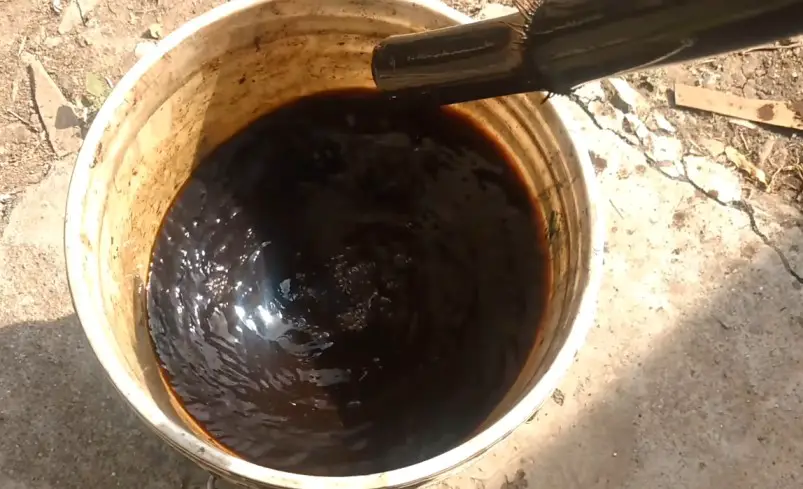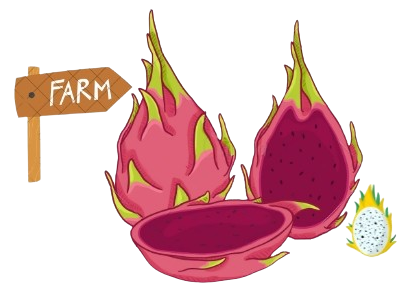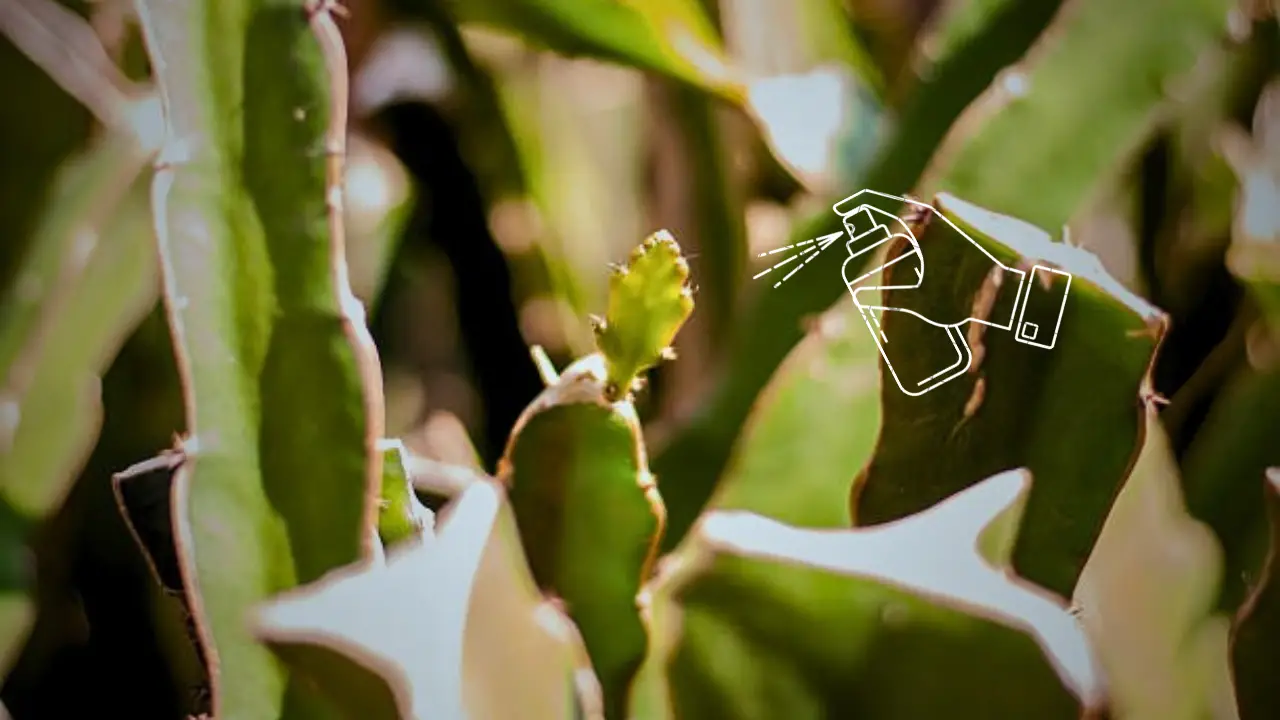Greetings, fellow farmers! Dragon fruit farming is truly a blessing, bringing good income with less fuss. And many of us are now seeing the wisdom in farming naturally, not just to save money, but to keep our land healthy for years to come.
Today, I want to share a secret that can make your dragon fruit plants grow faster, flower more, and give you bigger, sweeter fruits. It’s called Gibberellic Acid, a natural helper for plants. Now, you might see this in the market, but what if I told you that you can make it yourself, right on your farm, using something as simple as cow dung?
Yes, you heard that right! Let’s unlock nature’s power for our dragon fruit.
What’s This Gibberellic Acid (GA) All About?

Think of Gibberellic Acid as a plant’s own growth booster. It’s like a special vitamin that tells the plant to stretch out, grow new leaves, make more flowers, and produce bigger, juicier fruits. It does this by helping the plant’s cells divide and grow longer, making everything happen quicker and stronger.
Why is it a game-changer for your Dragon Fruit?
- Fast Growth: Your young dragon fruit plants will grow big and bushy quicker, making a strong frame for future fruits.
- More Flowers: Get ready for a burst of beautiful flowers, which means more chances for fruits!
- Bigger, Sweeter Fruits: Imagine plucking dragon fruits that are larger, sweeter, and have better color. This means more money in your pocket!
- Early Harvest: Your fruits will ripen faster, letting you pick and sell them sooner.
Our Secret Ingredient: The Mighty Cow Dung Cake

For generations, our elders knew the power of cow dung. It’s not just waste; it’s a treasure chest full of good things for our soil and plants.
Why are cow dung cakes perfect for making GA?
- Food for the Soil: They make the soil rich and crumbly.
- Tiny Helpers (Microbes): Cow dung is packed with microscopic creatures that work wonders. When we ferment it, these tiny helpers wake up and start creating natural plant hormones – including Gibberellic Acid!
- Water Magnet: It helps the soil hold onto water better, so your plants don’t get thirsty quickly.
- Natural Food: It provides natural phosphorus and nitrogen, which are like superfoods for leaves and flowers.
By using cow dung, we’re not just making GA; we’re also stepping away from expensive chemicals and embracing a truly natural, sustainable way of farming.
Making Your Own Natural Gibberellic Acid – Step-by-Step
This is simpler than you think!
What you’ll need:
- Dry Cow Dung Cakes: About 10 to 15 pieces (around 2-3 kg).
- Hibiscus flowers (5-10) or Banana leaves (5-10): These are like a secret ingredient to help the good fungi grow.
- Clean Water: 10 to 15 liters.
- Big Plastic Bucket: At least 15 liters.
- Some Stones or Weights: To keep the cow dung under water.
- Shady Spot: Away from direct sunlight.
Let’s Get Started!
- Break the Dung: Break the dry cow dung cakes into smaller pieces. This helps them soak up water better.
- Mix the Water: Pour 10-15 liters of clean water into your bucket. Then, add the crushed hibiscus flowers or torn banana leaves. This gives the good fungi a nice home to start growing.
- Dunk the Dung: Put all the broken cow dung pieces into the water. Use the stones or weights to make sure all the dung stays under the water.
- Cover It Up: Loosely cover the bucket with a cloth or a lid. This keeps out dust and bugs but still lets air move around.
- Stir Every Day: Once a day, take a wooden stick and give the mixture a good stir. This helps air get in and keeps the good fermentation going.
- Wait Patiently (7-10 Days): Leave your bucket in a shady spot. Over the next week to ten days, you’ll see a light, thin layer of fungus forming on top. Don’t worry, that’s a good sign! It means your natural GA is brewing.
- Strain and Store: After 10 days, strain the liquid using a cloth. This clear liquid is your natural Gibberellic Acid! Store it in a sealed container in a cool, dark place.
How to Use Your Homemade GA on Dragon Fruit

You have two easy ways to use this powerful liquid:
- For the Roots (Drip or Pouring):
- Mix 1 part of your natural GA with 3 parts of water (e.g., 1 liter GA with 3 liters water).
- You can put this mixture directly near the base of your dragon fruit plants using a drip system, or just pour it carefully around the roots.
- As a Spray (For Leaves and Flowers):
- Mix 1 liter of your natural GA solution with 10 liters of water.
- Spray this mixture evenly over all your dragon fruit plants. The best time to spray is early in the morning or late in the evening, when the sun isn’t too strong.
Important Things to Remember

- Don’t Overdo It: Always dilute the GA. Too much can be bad for the plants.
- Shade is Your Friend: Never store your GA in direct sunlight, and always apply it when the sun is not harsh.
- Keep it Safe: Store it away from children and animals.
- Shelf Life: Use your homemade GA within 30 days for the best results.
The Secret Behind the Magic
You might be wondering, how does this actually work? Well, the Gibberellic Acid you buy in the market is often made using special fungi in labs. What many don’t realize is that nature already has its own ways!
When you mix cow dung with hibiscus or banana leaves and let it ferment, you’re creating the perfect home for these natural fungi and good microbes. They break down the organic matter in the cow dung and release useful compounds, and one of these is natural Gibberellic Acid! It’s like nature’s own little factory.
By doing this, you are:
- Reducing your reliance on chemicals.
- Making your plants stronger and healthier naturally.
- Improving the health of your soil.
- Saving your hard-earned money!
This simple, low-cost method can truly transform your dragon fruit farm. Give it a try, and you’ll be amazed by the results!
Frequently Asked Questions (FAQ)
1. How often should I use this natural gibberellic acid on my dragon fruit plants?
- Detailed Answer: It’s best to use it once or twice a month, especially when your dragon fruit plants are actively growing, forming new shoots, budding, or setting fruit. Think of it like giving your plants a regular vitamin boost. However, too much of a good thing can sometimes be harmful, so stick to this frequency. If your plants are very young or just transplanted, you might start with one application a month and see how they respond before increasing.
2. Can I use the gibberellic acid solution without diluting it?
- Detailed Answer: Absolutely not. Always, always dilute this natural solution. The undiluted liquid is too strong and can actually burn the delicate roots or leaves of your plants, causing damage instead of helping them grow. Think of it like concentrated medicine – you always dilute it before giving it to someone. Stick to the recommended ratios: 1 part GA to 3 parts water for root application, and 1 part GA to 10 parts water for foliar spraying.
3. Can I store the natural gibberellic acid once I’ve made it? If so, for how long and how?
- Detailed Answer: Yes, you can store it. After straining, pour the liquid into a clean, sealed container. A plastic bottle or jar with a tight lid works well. Store it in a cool, dark place, away from direct sunlight and heat. A storage room, a shaded corner of your shed, or even under a bench would be suitable. For the best results and effectiveness, try to use it within 30 days of making it. Over time, its potency might slightly reduce.
4. What is the absolute best time of day to apply GA on plants?
- Detailed Answer: The best time to apply the solution, whether by spraying or at the roots, is early in the morning or late in the evening. Why? Because the sun isn’t too strong then. If you spray during the hot midday sun, the solution can evaporate quickly from the leaves before the plant has a chance to absorb it properly. Also, strong sun can sometimes react with solutions on leaves. Applying when it’s cooler allows for better absorption and less waste.
5. Is market-purchased gibberellic acid safe, or should I always stick to natural methods?
- Detailed Answer: Market-purchased gibberellic acid from reputable sources (like a 0.001% solution) is generally considered safe if used according to the manufacturer’s instructions. However, our natural method offers several advantages:
- Eco-Friendly: It’s completely natural and doesn’t introduce synthetic chemicals into your soil or environment.
- Cost-Effective: You’re using materials readily available on your farm, saving you money.
- Soil Health: It contributes to healthier soil by promoting beneficial microbes.
- Control: You know exactly what’s going into your solution. So while market options are safe if certified, the natural method is often safer for the long run and better for the entire farm ecosystem.
6. Can I spray this natural gibberellic acid solution directly on the dragon fruit flowers or buds?
- Detailed Answer: Yes, you can! Spraying the diluted GA solution directly on buds and developing flowers can be very beneficial. It can help in boosting bud formation, leading to more flowers, and can also assist in better fruit setting. Just remember to use the diluted spray solution (1 liter GA in 10 liters water) and spray gently.
7. Will this natural GA harm bees or other beneficial insects that visit my farm?
- Detailed Answer: No, this natural gibberellic acid, made from cow dung and natural plant materials, is safe for bees and other beneficial insects. It’s a naturally occurring plant hormone, not a pesticide. However, as a general good farming practice, it’s always wise to avoid spraying during the peak pollination hours (usually mid-morning to early afternoon) when bees are most active. This prevents disturbing them while they’re doing their important work.
8. Besides dragon fruit, what other plants or crops can benefit from this natural solution?
- Detailed Answer: This natural gibberellic acid can be a powerful booster for many other fruiting crops and even some vegetables! Plants like tomatoes, chillies, grapes, eggplants, gourds, and other fruit-bearing plants are known to respond well to GA application. It can help in promoting flowering, fruit size, and overall growth in these plants too. You can experiment on a small scale to see the results on your other crops.
9. Does this natural gibberellic acid work in the winter months, or when plants slow down?
- Detailed Answer: Yes, it can still be effective in winter. Even when plants naturally slow down or enter a period of reduced growth (dormancy), gibberellic acid can help to gently stimulate growth and metabolic activity. It can be particularly useful in early winter to encourage some growth before a deep dormancy, or to help plants ‘wake up’ and start growing faster as winter begins to recede. It helps them prepare better for the next growing season.
10. What if I see a lot of strange fungus or a really bad smell when I’m making or storing the solution?
- Detailed Answer: It’s normal to see a light, thin film of fungus forming on the surface during the fermentation process – that’s a good sign! It means the beneficial microbes are at work. However, if you see excessive, thick, or colorful mold (like green or black fuzzy patches), or if the solution develops a strong, putrid, rotten smell (not just a mild, earthy fermentation smell), then it means something has gone wrong. In such cases, it’s best to discard that batch and start fresh with new ingredients. It’s better to be safe and ensure you’re using a healthy solution.
If you have any questions regarding gibberellic acid do let me know in the comment section below.

